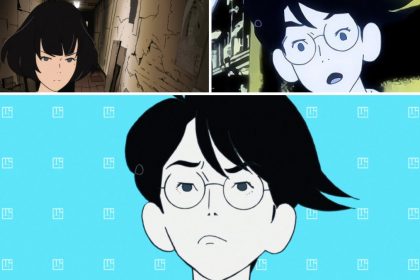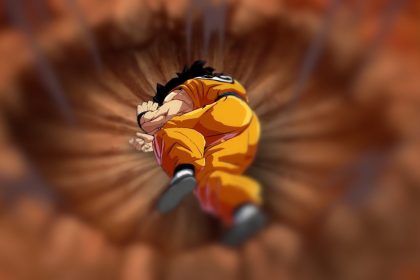Osamu Tezuka is hailed as the “Godfather of Manga” and a visionary in the world of anime and manga. His groundbreaking works and innovative storytelling techniques have left an indelible mark on the industry. In this article, we will take a journey into the life and achievements of Osamu Tezuka, exploring his early influences, iconic creations, and enduring legacy. Get ready to dive into the captivating world of Tezuka’s imagination and discover the impact he has had on the art forms of manga and anime.
Early Life and Influences
Osamu Tezuka’s passion for manga was ignited during his childhood years. Growing up in Japan, he developed a deep love for the art form and immersed himself in the colorful pages of manga magazines. But Tezuka’s influences extended beyond the borders of Japan. He drew inspiration from the works of Walt Disney and Max Fleischer, infusing his own manga with elements of Disney’s animation and Fleischer’s dynamic character designs. Tezuka’s exposure to both Japanese and Western storytelling would prove to be a defining factor in his artistic style and narrative approach.
The Birth of Manga and Astro Boy
Tezuka’s contributions to the development of manga cannot be overstated. In the 1940s, he played a pivotal role in transforming manga from a niche art form to a mainstream cultural phenomenon. His most iconic creation, Astro Boy, debuted in 1952 and became an instant sensation. Astro Boy introduced a new level of sophistication to manga, featuring intricate panel layouts, dynamic action sequences, and thought-provoking storytelling. Tezuka’s ability to blend science fiction, adventure, and social commentary in Astro Boy captured the hearts of readers of all ages, propelling manga into the forefront of popular culture.
Osamu Tezuka: Pioneering Techniques and Themes
One of the hallmarks of Tezuka’s work was his innovative storytelling techniques. He revolutionized the manga medium by introducing cinematic panel layouts, intricate character expressions, and detailed backgrounds. His use of “manga no kamisama” or “the god of manga” technique, which involved drawing characters with large expressive eyes, became a defining characteristic of manga art. Additionally, Tezuka fearlessly tackled complex themes in his works, delving into topics such as war, discrimination, environmentalism, and the human condition. His ability to weave deep, thought-provoking narratives within the pages of manga elevated the medium and captivated readers, transcending cultural and generational boundaries.
Further Readings: Anime Studio: A Look at How Anime is Made
Expansion of Tezuka’s Universe
Tezuka’s creative genius extended beyond Astro Boy. He went on to create a multitude of diverse characters and series that showcased his versatility as a storyteller. Black Jack, a brilliant and enigmatic surgeon, became another beloved character in Tezuka’s universe. With Black Jack, Tezuka explored the ethical dilemmas of medicine and the frailty of human existence. Another notable creation was Princess Sapphire from “Princess Knight,” a groundbreaking series that challenged traditional gender roles and stereotypes. Tezuka’s ability to create memorable characters and compelling narratives across a wide range of genres solidified his status as a true master of storytelling.
Osamu Tezuka’s Impact on the Anime Industry
Tezuka’s influence extended beyond the realm of manga and left an indelible mark on the anime industry as well. Many of his manga works were adapted into anime series and films, introducing his captivating stories to a broader audience. The success of these adaptations further cemented Tezuka’s position as a creative force in both mediums. His innovative animation techniques, such as[Continuation]
limited animation, influenced the way anime was produced and paved the way for future generations of animators. Tezuka’s ability to seamlessly blend engaging narratives with visually stunning animation set a new standard for the industry, inspiring countless artists and animators to push the boundaries of their craft.
Humanitarian and Social Commentary
Beyond his artistic achievements, Tezuka was a passionate advocate for social justice and humanitarian causes. Throughout his career, he utilized manga as a powerful medium for social commentary. In works such as “Message to Adolf” and “Ayako,” Tezuka fearlessly addressed issues like war, discrimination, and the dark side of human nature. Through his stories, he aimed to raise awareness, provoke thought, and spark conversations about important social issues. Tezuka’s commitment to using his art for the betterment of society showcased his deep empathy and unwavering belief in the power of storytelling.
Legacy and Recognition of Osamu Tezuka
Osamu Tezuka’s impact on the world of manga and anime is immeasurable. His contributions to the mediums have earned him numerous accolades and honors. Despite his untimely passing in 1989, his legacy lives on through the countless artists and creators he has influenced. Tezuka’s works continue to be celebrated and cherished by fans around the globe, and his name remains synonymous with innovation, creativity, and artistic brilliance. His influence can be seen in the works of contemporary mangaka and animators, who have been inspired by his storytelling techniques, thematic depth, and ability to capture the essence of the human experience.
Conclusion, “Master” Osamu Tezuka
In conclusion, Osamu Tezuka’s impact on the world of manga and anime cannot be overstated. His pioneering spirit, innovative techniques, and thought-provoking narratives have forever changed the landscape of these art forms. Tezuka’s legacy as the “Godfather of Manga” lives on, inspiring generations of artists to push the boundaries of their creativity and storytelling. As we continue to delve into the captivating worlds he created, we can’t help but marvel at the genius of Osamu Tezuka and the lasting impact he has left on the artistry of manga and anime.













